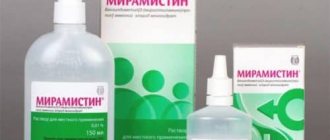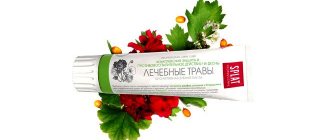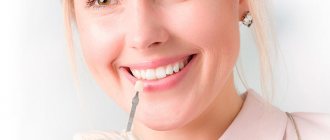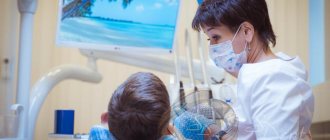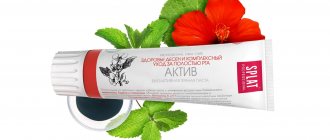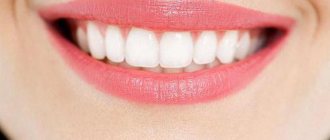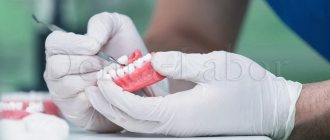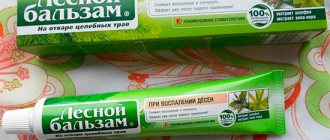Dear friends, hello!
Today, at your request, we will compare two antiseptics: Chlorhexidine and Miramistin.
We will read the instructions of both remedies and find out what their differences are, when it is better to offer Chlorhexidine, and when Miramistin.
I'll also jot down a list of customer requests for which you can offer them.
Go!
Active ingredients
Sometimes I hear that they are one and the same.
It’s not just pharmacy employees who visit the blog, so I tell everyone:
No, they have different active ingredients.
In Chlorhexidine, the active substance is called "chlorhexidine bigluconate".
Already from the name it is clear that the composition contains chlorine.
Let us remember bleach and chloramine, which have long been used for disinfection, since they mercilessly deal with microbial cells.
Chlorhexidine is from the same opera. I mean, it's just as strong an antiseptic.
It was synthesized in Great Britain in 1950, and then, having demonstrated its antimicrobial properties in clinical studies, it spread to different countries and continents.
Miramistin. The active ingredient sounds quite simple: benzyldimethyl (3-(myristoylamino) propyl) ammonium chloride monohydrate.
Its history dates back to the 70s of the last century in the USSR.
It was originally conceived for astronauts. Already during the first space flights, alarming news began to arrive from orbit: in the cabins of ships, it was not apple and pear trees that bloomed lushly, but colonies of bacteria and fungi.
This was predisposed to a confined space, a constant temperature of 22-23 degrees and microorganisms that normally live on the skin and hair of astronauts. And those antiseptics with which they were supplied on their journey turned out to be powerless.
Therefore, it was necessary to develop a drug that would act on bacteria, including antibiotic-resistant viruses, and fungi.
Preclinical trials took 10 long years.
And then hard times came for the country. Funding for many promising projects has ceased.
The new antiseptic might never have been published if it had not been for the Olympics in Moscow. It was expected that thousands of foreigners would come to the capital, and the USSR Ministry of Health was worried that there would be a surge in sexually transmitted diseases in a country where “there was no sex.”
Then the Minister of Health received information on Chlorhexidine and, just in case, on Miramistin (it was called differently in those years), which in studies showed itself to be unique in many respects.
The Minister of Health was impressed by the properties of the new antiseptic, and work on it continued.
In 1993, the first batch of the drug was released.
So if Chlorhexidine was originally a foreign creation, Miramistin is ours, ours.
The drug Miramistin
The drug is also active against VIL and herpes
The history of the development of antiseptics is very interesting, it concerns space.
Back in Soviet times, work was carried out to create a drug that would act in confined space conditions, where a favorable environment was formed for the proliferation of microbes.
The active ingredients of Miramistin were tested on board the ship, but innovative developments at that time ended up “on the shelf” for some reason.
Relatively recently they were remembered, which formed the basis of modern antiseptics.
The chemical formula of the drug is benzyldimethyl [3-(myristoylamino) propyl] ammonium chloride monohydrate, this is the active ingredient. For better absorption, the active component is supplemented only with purified water.
The action of the antiseptic extends to many types of bacteria, including:
- streptococci, staphylococci;
- anaerobic/aerobic infections;
- ascomycetes;
- chlamydia;
- Trichomonas;
- gonococcus;
- Treponema;
- yeast, etc.
The drug is also active against VIL and herpes. When treating a wound, Miramistin prevents the absorption of ulcers into the blood, the wound dries out, and tissue regeneration is stimulated.
Directions for use:
- flushing the maxillary sinus for sinusitis;
- gargling, as well as irrigation by spraying for diseases of the larynx, for treatment you need to press the dispenser 3-4 times, repeat procedures at intervals of 4 hours (10 ml of liquid is required for one rinse);
- when treating tonsillitis and pharyngitis in children, irrigation is carried out (3-5 ml per treatment);
- for stomatitis, gingivitis, periodontitis, mouth rinse with 10-15 ml of the drug is prescribed, 3-4 times a day;
- treatment of wounds and burns by application, irrigation, also placing tampons moistened with the drug (repeat the treatment procedure 2-3 times a day for 3-5 days);
- to prevent infections after childbirth, vaginal irrigation is carried out (before birth - 5-7 days, during childbirth - after each examination, after childbirth - 50 ml of the product for 5 days);
- in order to prevent sexually transmitted diseases, the drug is used no later than 2 hours after intimacy (men 2-3 ml in the urethra, women 1-2 ml in the vagina);
- for complex therapy of urethritis/urethroprostatitis, it is injected into the urethra (2-3 ml of the drug 1-2 times a day, course – 10 days).
The mechanism of action of the antiseptic lies in the ability of the active component to destroy the outer cell membrane of microorganisms, as a result of which their integrity is impaired and they die.
How do Chlorhexidine and Miramistin work?
Chlorhexidine:
Damages the cell membrane of the microbial cell, increases its permeability. The substances necessary for its existence leak and it dies.
- At a concentration of less than 0.01% it has a bacteriostatic effect, i.e. suppresses the growth of bacteria.
- At a concentration of more than 0.01%, it destroys microbes and complex viruses (has a bactericidal and virucidal effect).
- At a concentration above 0.05% it destroys pathogenic fungi.
Conclusion: the 0.05 and 0.5% solutions of Chlorhexidine available in pharmacies are effective against various pathogens.
BUT: Chlorhexidine may cause irritation to the skin and mucous membranes. It sometimes causes chemical burns (mainly mucous membranes).
Miramistin:
- Has a bactericidal effect. The mechanism is similar to Chlorhexidine.
- Activates regeneration (healing) processes.
- Has hyperosmolar activity. This means that it attracts inflammatory exudate, which reduces inflammation in and around the wound.
- Sorbs (absorbs) purulent exudate. A dry crust forms faster. It protects the wound from germs and dirt.
Does not damage living skin cells. Does not cause chemical burns.
Conclusion: Miramistin has a milder effect than Chlorhexidine and is safer.
Which drug is better?
According to research data, Miramistin has a great effect against pathogenic microflora.
The drug covers a wider range of bacteria, which is why its use is preferable for various infections.
The action of Miramistin is mild without irritation or burns, so it is preferable for treating the laryngeal mucosa.
The peculiarity of the drug is its ability to destroy dangerous strains of bacteria, against which even antibiotics are powerless.
The hypoallergenic nature of the product expands the range of applications.
Both options are actively used in gynecology. They are used separately or in combination. It is impossible to say for sure which antiseptic is better, since the choice depends on the type of disease, characteristics of the body, the presence of allergies and other important factors.
Who do they act on?
Chlorhexidine
Targets for him:
- various microorganisms, including staphylococci, streptococci, chlamydia, ureaplasma, pathogens of syphilis, gonorrhea.
- mushrooms – the types are not specified in the instructions.
- viruses covered with an additional shell. They are also called “complex” or “complexly organized”.
Simple viruses consist of DNA or RNA (i.e., a molecule that stores genetic information) and a protective protein shell (capsid) surrounding it.
Complex viruses have an additional shell consisting of lipoproteins. This is what Chlorhexidine destroys, causing the death of the virus.
Examples of complex viruses: herpes simplex virus, human immunodeficiency virus (HIV).
Most of the viruses that cause ARVI are simple, so gargling with Chlorhexidine in the first days of ARVI does not make sense.
- Protozoa. For example, Trichomonas are the causative agents of trichomoniasis.
Miramistin
It acts on the same pathogens as Chlorhexidine.
In addition:
- active against hospital strains. These are types of microbes that have adapted to life in a hospital environment. They are not taken by standard antibiotics because they have mutated and acquired special properties. Most often these are Staphylococcus aureus, Streptococcus, Escherichia coli, Proteus, Klebsiella, Pseudomonas aeruginosa, etc. It is these microbes that are often responsible for the development of severe purulent processes in weakened patients who have been in the hospital for a long time.
- active against yeast fungi, dermatophytes (the main causative agents of mycosis of the feet), ascomycetes (a type of mold fungi). It even works on those mushrooms that have become resistant to antifungal agents.
On the Internet I came across Miramistin ointment, which is indicated, among other things, for the treatment of mycoses of the feet. But I didn’t find it in Russian pharmacies. Or is there?
Conclusion:
The spectrum of action of Miramistin is higher.
What is Chlorhexidine?
And we will also consider what Chlorhexidine is in order to fully consider the differences between Miramistin and Chlorhexidine.
Chlorhexidine is the most inexpensive of the popular antiseptics, which is used both in operating rooms and at home. The solution is capable of destroying fungi, bacteria and microbes, and in a weak percentage, stopping their reproduction. Chlorhexidine can also be applied to mucous membranes, but only in a weak percentage. The active ingredient of the drug is a salt of gluconic acid (digluconate).
When are Chlorhexidine and Miramistin used?
Chlorhexidine:
- Prevention of sexually transmitted diseases: syphilis, gonorrhea, trichomoniasis, chlamydia, herpes, HIV, etc.
- Disinfection of hands, instruments, surgical field.
- Prevention of suppuration of abrasions and wounds.
- Festering wounds.
- Burns – to prevent infection.
- Oral diseases: gingivitis, stomatitis, periodontitis, etc.
- Prevention of infection after dental operations (for example, tooth extraction) and manipulations.
- In gynecology, Chlorhexidine irrigation is used to prevent postpartum infection.
- In urology - in the complex treatment of urethritis (inflammation of the urethra).
- Prevention of fungal infection after visiting baths, saunas, swimming pools.
- Treating shoes to prevent re-infection during the treatment of mycoses of the feet.
- Disinfection of the injection site in the absence of alcohol or alcohol wipes.
Miramistin:
The price of Miramistin is significantly higher, so, as a rule, it is NOT used to disinfect hands, instruments, shoes, or to prevent fungal infections after visiting public places where you can pick up a fungus.
The rest of the readings are the same.
Additionally:
- Complex treatment of otitis (drip into the ear, put turundas), sinusitis (during puncture, the maxillary sinuses are washed).
- If necessary, it can be dropped into the eyes: conjunctivitis, eye injury, burn. There are even eye drops containing Miramistin in the same concentration as the solution for external use. They are called Okomistin.
Conclusion:
Chlorhexidine in solution has a wider range of applications as a PREVENTIVE agent, and Miramistin - as a MEDICINE.
Description
Miramistin is a domestic broad-spectrum antiseptic drug that is used for the prevention and treatment of bacterial, fungal and viral infections. Initially, the drug was intended to disinfect compartments on Soviet spaceships and stations. And now Miramistin has shown itself to be excellent in the prevention and therapeutic treatment of wounds, purulent-septic processes, the appearance of which accompanies surgery and traumatology. Miramistin effectively fights pathogenic microorganisms, therefore it is applicable in gynecology, urology, dentistry, otolaryngology and other branches of medicine.
But you should not think that Miramistin simply has an antimicrobial effect; it is quite strong and fights even those strains that are insensitive to other antibiotics. Miramistin interacts with ascomycetes, yeast and yeast-like fungi, dermatophytes, and some other pathogenic fungi. And what is especially important, Miramistin is able to influence human immunodeficiency viruses, herpes, etc. That is, demonstrate an antiviral effect. The medicine is also quite active against pathogens that cause sexually transmitted diseases (STDs).
Miramistin prevents infection of burns and wounds, as it accelerates the absorption of purulent secretions, stimulates the process of tissue regeneration and the manifestation of the body's protective reactions.
And all these wonderful properties practically do not cause allergic reactions or irritation to the skin. This is what it means that the product was developed for the space industry.
Systemic effects
Chlorhexidine
When applied topically the aqueous solution is not absorbed into the bloodstream and does not have a systemic effect. In case of accidental entry into the stomach, it is not absorbed.
BUT: nevertheless, the manufacturer warns:
In case of accidental ingestion of the solution, perform a gastric lavage and give a sorbent.
Apparently, this is why in the instructions for Chlorhexidine we do NOT see a clear recommendation to use it for sore throat and tonsillitis. Not everyone knows how to gargle correctly. This is especially true for children. They can easily swallow it.
The alcohol solution is partially absorbed through the skin and can cause depression of the central nervous system.
Special instructions:
If any Chlorhexidine solution accidentally gets into your eyes, rinse them quickly and thoroughly with water.
Avoid contact with the inner ear. This could be the case, for example, with perforated otitis media. Therefore, Chlorhexidine is not dripped into the ear.
Miramistin
When applied topically, it is not absorbed through the skin and mucous membranes.
Accidental ingestion does not pose a health hazard. The drug will come out naturally.
Conclusion:
Miramistin is safer.
The problem of wound infection has become extremely relevant in recent years. The number of infectious complications from surgical wounds has sharply increased, resulting in severe sepsis caused by gram-negative microorganisms, as well as microorganisms resistant to almost all modern antimicrobial drugs.
Among all surgical patients, wound infection occurs in 35-45%. The number of postoperative purulent-septic infections in 1998 increased to 39% [14].
Simultaneously with the increase in bacterial infections, the frequency of candida and aspergillus fungi increases, most often due to the widespread, irrational use of antibacterial, corticosteroid, cytostatic drugs, as well as the lack of the concept of simultaneous prescribing of antifungal drugs with antibiotics for prophylactic purposes. The problem of intrahospital spread of both aerobic and anaerobic (clostridial and non-clostridial) infections remains relevant.
The reasons for the increase in the frequency and severity of purulent infections in surgery are varied and include the following factors:
— increasing the volume of surgical interventions, especially in high-risk patients;
- widespread use of instrumental examination and treatment methods accompanied by infection of the patient (intravascular and urinary catheters, endoscopic and tracheostomy tubes, endoscopic manipulations, etc.);
- traditional long-term regimens of prescribing certain groups of antibiotics for therapeutic and prophylactic purposes without regular monitoring of the dynamics of resistance of hospital strains to these drugs.
Depending on the pathogens that have invaded and the changes that occur in the wound, nonspecific (purulent, anaerobic, putrefactive) and specific (wound diphtheria, wound scarlet fever) wound infections are distinguished. In addition, a number of infectious diseases that do not have the nature of a wound infection enter the body through a wound, i.e. not accompanied by noticeable disturbances in the wound process. Some of these common infectious diseases are necessarily associated with the invasion of a pathogen into a wound (tetanus, rabies, rat bite disease); in others, the wound is only one of the possible routes of penetration of microbes (syphilis, anthrax). In practice, it is advisable to focus on the distribution of patients with wound infection into groups, taking into account the etiological and clinicopathological features:
- acute purulent diseases of the skin and soft tissues (abscessing boil, carbuncle, hidradenitis, mastitis, etc.);
— purulent post-traumatic wounds of soft tissues (with or without bone damage, with long-term soft tissue crush syndrome);
— postoperative purulent wounds of soft tissues;
— chronic purulent diseases of soft tissues (trophic ulcers of various origins, bedsores, etc.);
- hematogenous, postoperative or post-traumatic osteomyelitis;
- surgical sepsis.
Regardless of the origin of the wound process, the species composition of the wound microflora, the main methods of treatment are surgical and active complex effects on the purulent process, aimed at eliminating the tissue defect, suppressing the growth of microflora vegetating in the wound or preventing suppuration.
Along with timely surgical intervention on a purulent focus, the outcome of the disease is largely determined by adequate systemic and local antibacterial therapy, strictly focused on the data of bacteriological studies.
Only local drug treatment that is carried out strictly in accordance with the pathogenesis of the wound process can be considered reasonable, i.e. taking into account the phase of its flow [15].
Etiology of wound infections
In recent years, under the influence of various factors, primarily the powerful selective action of antibiotics, significant changes have occurred in the etiology of wound infections. Currently, the leading pathogens are:
— staphylococci (S. aureus, S. epidermidis);
- £, B, Y-hemolytic and non-hemolytic streptococci;
— representatives of the family Enterobacteriaceae (E. coli, Citrobacters
spp.,
Klebsiella
spp.,
Enterobacter
spp.,
Serratia
spp.,
Proteus
spp.,
Providencia
spp.);
- non-fermenting gram-negative bacteria (Pseudomonas
spp.,
Acinetobacter
spp.,
Moraxella
spp.,
Flavobacterium, Achromobacter).
The dependence of the species composition of wounds on their origin is clearly visible. So, for example, if in a group with acute purulent diseases staphylococcus in monoculture is detected in 69.5% of cases, then in patients with post-traumatic purulent wounds, chronic purulent diseases of the skin and soft tissues, as well as in patients with purulent wounds and developed sepsis, they are detected immediately several pathogenic microorganisms in 31.5, 48.8, 55.6% of cases, respectively. The rest are representatives of the family Enterobacteriaceae
in monoculture.
In recent years, fungi have begun to emerge from wounds much more often (9.9%), which is apparently due to insufficient attention to this problem and the lack of reliable prevention of fungal invasion (Table 1).
Obligate non-spore-forming anaerobic microorganisms, among which Bacteroides
spp.,
Fusobacterium, Peptococcus
spp.,
Peptostreptococcus
spp.,
F. nucleatum, P. melaninogenicus.
The proportion of pure non-clostridial and mixed aerobic-anaerobic microflora also depends on the location and origin of the purulent wound.
Currently, it is possible to significantly reduce the duration of systemic antibacterial therapy through the active introduction into practice of treating wounds under dressings with modern drugs focused not only on the phase of the wound process, but also on the species composition of wound microorganisms.
This tactic, with timely adequate surgical intervention and treatment with correctly selected drugs for local therapy, allows you to localize the purulent process and avoid generalization of the infectious process.
The use of modern drugs for local treatment of wounds at all stages of complex treatment makes it possible to reduce the time of systemic antimicrobial therapy, avoid the development of side effects, significantly reduce the cost of expensive antibacterial drugs, and avoid the formation of microflora resistance to the systemic antibiotics used.
Currently, several groups of drugs have been developed for local treatment of wounds in phases I and II of the wound process (Table 2).
The main groups of drugs are antiseptics, polyethylene glycol (PEG)-based ointments, modern biologically active dressings, enzyme preparations, and new antiseptics.
Antiseptics
When choosing antiseptics used for both preventive and therapeutic purposes, preference is given to drugs with a universal, broad spectrum of action, active against mixed microflora, and having a microbicidal or microbostatic effect.
Iodophors
In the practice of wound treatment, new complex compounds of iodine with polyvinylpyrrolidone (povidone-iodine, betadine, iodopirone, iodovidone, etc.), which have microbicidal and microbostatic effects, are widely used.
Drugs in this group suppress:
- gram-positive bacteria, including enterococci and mycobacteria;
- gram-negative bacteria, including pseudomonas, acinetobacter, Klebsiella, Proteus;
— bacterial spores, fungi, viruses, including hepatitis B and C viruses, entero- and adenoviruses, as well as anaerobic, spore-forming and asporogenic bacteria.
All pathogens of wound infections do not have either natural or acquired resistance to iodophors.
The activity of the complex with polyvinylpyrrolidone is not affected by the presence of blood, purulent discharge or necrotic tissue [4].
The most widely used in the practice of treating purulent-inflammatory processes are two dosage forms of complex compounds of iodine with polyvinylpyrrolidone - solution and ointment.
Ointments (1% iodopyrone ointment, povidone-iodine ointment) are used to treat purulent wounds with heavy exudation. Solutions (iodopirone, povidone-iodine) are used as antiseptics for prophylactic purposes for treating the surgical field, skin during punctures, closing surgical sutures, as well as for the treatment of wounds, trophic ulcers, bedsores, and diabetic foot syndrome in the absence of a large amount of wound separated.
Dioxidine
Dioxidin is one of two drugs derived from quinoxyline di-N-oxide, developed as a result of fundamental exploratory research in the period from 1960 to 1980 at the All-Union Scientific Research Chemical-Pharmaceutical Institute (currently the Center for the Chemistry of Medicines - TsKhLS VNIHFI , Moscow).
A number of drugs of this class of substances with high antimicrobial activity and a wide antimicrobial spectrum (quindoxine, mequidox, carbadox, temadox, olaquindox) have been developed abroad.
The drug is intended for the treatment of patients with wound infections caused by multidrug-resistant flora, Pseudomonas aeruginosa and non-clostridial anaerobic pathogens. This drug is most active against anaerobic bacteria (Clostridium
spp.,
Bacteroides
spp.,
P. melaninogenicus, Peptococcus
spp.,
Peptostreptococcus
spp., as well as aerobic gram-negative bacteria -
Ps.
aeruginosa, E. coli, Proteus spp.,
Klebsiella
spp.,
Serratia
spp.) [1-3].
It should be noted that strains of Pseudomonas aeruginosa, as well as gram-positive bacteria (staphylococci, streptococci), are more resistant to the drug. That is why, if the clinical situation allows, a 1% dioxidine solution without dilution is used for local treatment.
In the 70-90s, a solution of dioxidine in monotherapy and combination with other antibacterial drugs was considered as the drug of choice for the treatment of patients with sepsis, diffuse and local peritonitis, for the prevention and treatment of purulent-inflammatory processes in the liver and biliary tract, lungs, stomach, kidney allotransplantation, cardiac vascular prosthetics and coronary artery bypass grafting, under conditions of artificial circulation [11-13].
Currently, in Russian clinics for more than 25 years, various dosage forms of dioxidine have been used to treat various forms of purulent infection:
a) for local treatment
— 5% ointment, “Dioksikol” ointment containing 1% dioxidine, dioxidine aerosol (“Dioxisol”), polymer compositions with dioxidine (“Diovin”, “Diotevin”, Anilodiotevin”, “Colladiasob”, “Digispon A”, suture material ;
b) for introduction into cavities, for ultrasonic inhalations
— 1% aqueous solution in ampoules;
c) for intravenous administration
— 0.5% aqueous solution in ampoules.
Intravenous administration of dioxidine is carried out for health reasons. When justifying and determining the indications for the intravenous administration of dioxidine from the “benefit-risk” perspective, it should be taken into account that over the past 15-20 years, highly effective antibacterial agents have been created that have advantages over dioxidine in terms of toxicological properties. Therefore, dioxidin is prescribed intravenously only if other chemotherapeutic agents are ineffective or intolerable, strictly observing the recommended doses for the drug and the duration of each infusion.
Dioxidin is well compatible with other antimicrobial drugs. The clinical capabilities of dioxidin are expanded due to its ability to penetrate the blood-brain barrier, which makes it possible to use it in the treatment of patients with meningitis, brain abscesses and purulent cranial wounds.
Miramistin
The domestic antiseptic Miramistin belongs to quaternary ammonium compounds (cationic surfactants). Preclinical and clinical studies have shown that Miramistin has a pronounced antimicrobial effect against gram-positive and gram-negative, aerobic and anaerobic, spore-forming and asporogenic bacteria in the form of monocultures and microbial associations, including antibiotic-resistant hospital strains. The drug is most effective against hospital strains of staphylococcus and streptococcus. The drug has a detrimental effect on fungi, viruses, and protozoa.
Miramistin has been introduced into clinical practice since the early 90s of the last century. Currently, the drug is widely used in the complex treatment of purulent wounds and accompanying inflammatory complications in the bronchopulmonary system in the form of ultrasonic inhalations and the genitourinary system in the form of bladder instillations [5].
Lavasept
An antiseptic drug, the main active ingredient of which is polyhexanide, considered by experts as the drug of choice for the treatment of contaminated and infected wounds [16]. Polyhexanide belongs to the group of positively charged (cationic) polymers and contains surfactants, which reduce surface tension, which ensures easier removal of microbial biofilms.
Lavasept has a broad-spectrum bactericidal effect, is active against gram-positive and gram-negative bacteria (including Pseudomonas aeruginosa
), fungi, and MRSA.
Prontosan
A particular danger for the patient is a “dormant” infection, the aggressiveness of which is determined by the variability of the microflora, the reactivity of the body, the loss of activity of traditional systemic antibiotics and drugs for local medicinal treatment of wounds. This threat persists to a particular extent if the patient has foreign bodies, implanted devices, in patients with long-term non-healing wounds, trophic ulcers, diabetic foot syndrome, with post-traumatic and postoperative osteomyelitis, chronic post-traumatic and postoperative wounds.
It has been established that microorganisms and fungi, when they remain in a wound for a long time, thanks to the polymers they secrete, form a thin layer - a biofilm. Biofilm formed by bacteria and fungi provides reliable protection for pathogens from ultraviolet radiation, antibiotics, phagocytosis and other factors of the body’s immune system. Microbes in the biofilm can withstand concentrations of antibiotics 100-1000 times more than suppressive planktonic cells. Therapeutic effects on biofilms can be aimed at the mechanisms of initial adhesion of bacteria to the surface, blocking synthesis or destruction of the polymer matrix.
Currently, the attention of researchers on this problem is drawn to the possibility of using various medications that destroy the biofilm formed by bacteria and fungi. One of these drugs is prontosan, which contains polyhexanide, a polymerized biguanide derivative that acts as a local cationic antiseptic. The antimicrobial effect of polyhexanide is due to nonspecific affinity for the cell membranes of the microorganism, which contains a large amount of acidic phospholipids. Polyhexanide acts on bacterial cell membranes and increases their permeability.
Two dosage forms of Prontosan have been introduced into practice - 0.1%, 0.2% solution and gel, which contains 0.1% polyhexanide, 0.1% undecylenic amidopropyl betaine (surfactant), glycerol (humectant), hydroxyethylcellulose ( gelling agent), water.
PEG-based sorbents and ointments
It should be remembered that with abundant purulent exudation, the use of antiseptic solutions for local treatment of wounds in the form of gauze tampons is considered a flawed method, since tampons placed in the wound dry out quickly and do not have the long-term osmotic activity necessary to remove pus. In extreme cases, the wound can be filled with a combined tampon - a silicone tube is placed in the center of the gauze tampon, through which 10-20 ml of antiseptic is injected into the wound with a syringe 3-6 times a day.
For the treatment of superficial infected, purulent and purulent-necrotic wounds of various etiologies in the inflammatory phase, biologically active draining sorbents (anilovine, diovin, anilodiovin, diotevin, anilodyotevin, collasorb, colladiasorb), the main component of which is helevin, are successfully used. Dioxidin is used as an antimicrobial drug. The proteolytic effect of sorbents is due to the introduction of proteolytic enzymes into their composition (terrylitin, collagenase from hydrobionts). The analgesic effect is achieved due to the presence of a local anesthetic, anilocaine, in the composition [11].
Targeted use of biologically active dressings with a differentiated effect on the wound process, taking into account its phase and characteristics of the course, providing for sorption-application therapy in phase I of the wound process using biologically active sorbents or gel dressings with antimicrobial, analgesic and proteolytic effects, followed by wound treatment in phases II and III of the wound process with biologically active stimulating coatings with a specific effect on the processes of regeneration and epithelization.
In recent years, it has become possible to more successfully treat wounds using a new combination drug Baneocin, containing two highly active bactericidal components - bacitracin (a polypeptide antibiotic that inhibits the synthesis of bacterial cell walls) and neomycin (an aminoglycoside that inhibits protein synthesis), between which there is synergy. The results of numerous studies indicate the high activity of baneocin against gram-negative, gram-positive flora, aerobes and anaerobes. The components of the drug exhibit synergism against highly resistant hospital strains of Ps. aeruginosa, E. coli, S. aureus.
Baneocin is characterized by the ability to create high bactericidal concentrations in a purulent focus and not have a systemic effect. Numerous studies have shown that when treating wounds under bandages with Baneocin, complete eradication of pathogenic pathogens and reliable prevention of reinfection of the wound surface by hospital microorganisms is achieved in a short time without the traditional systemic antimicrobial therapy in such cases, prescribed for both therapeutic and prophylactic purposes.
The drug Baneocin is available in two dosage forms, focused on the phases of the wound process. For example, for the treatment of purulent wounds in the first phase of the wound process, Baneocin powder is used, which actively absorbs wound discharge within 5 hours.
For the treatment of wounds in the II phase of the wound process, Baneocin ointment is used, which exhibits a local bactericidal effect necessary to prevent reinfection of granulating wounds with hospital strains. The resulting thin film of the drug protects the thin layer of young epithelium from damaging factors.
The positive properties of two dosage forms of Baneocin - powder and ointment - are successfully implemented both at the outpatient and inpatient stages of complex treatment of patients of different groups:
- with focal skin infections (hidradenitis suppurativa, paronychia, boil, carbuncle);
- with burns, frostbite;
- with trophic ulcers;
- for the prevention of suppuration of household, sports and industrial wounds, abrasions (violations of the integrity of the skin);
— to prevent the development of an infectious process in the area of donor wounds when collecting skin grafts in traumatology, surgery, and cosmetology.
Painless and non-traumatic application, deep penetration into tissue, and good tolerability of Baneocin make it possible to successfully treat patients with trophic ulcers even in cases of aggravated allergic history (intolerance to traditional local drugs) or the identification of highly resistant strains of Ps. aeruginosa
[6].
For the treatment of extensive and deep wounds with a purulent process in the first phase
over the past 25-30 years, PEG-based ointments have been successfully used (levosin, levomekol, 5% dioxidine ointment, dioxykol, 1% iodopyrone ointment, 1% povidone-iodine ointment, 0.5% miramistin ointment, iodometricylene, nitacid, streptonitol , 10% mafenide acetate ointment, streptolaven, stallanin-PEG 3%, oflomelide, etc.). The listed drugs have different osmotic activity for the differentiated treatment of wounds in the first phase of the wound process with copious or moderate amounts of wound discharge (boils, carbuncles, hidradenitis, mastitis, abscesses, phlegmons, suppurating lipomas, atheromas, purulent postoperative and post-traumatic purulent wounds, venous trophic ulcers , “diabetic foot” with a local purulent-necrotic process, etc.
These drugs have a fairly wide spectrum of activity against both aerobic and non-spore-forming anaerobic microorganisms.
Despite many years of intensive use of ointments containing chloramphenicol or dioxidin, their high antimicrobial activity remains against the main causative agents of surgical infection.
If there are gram-negative bacteria in the wound, in particular Pseudomonas aeruginosa, it is recommended to use 10% mafenide acetate ointment, 5% dioxidine ointment, dioxicol ointment, nitacid ointment.
For the treatment of non-sporogenous anaerobic infection in combination with aerobic infection, it is advisable to use the following drugs:
- with nitazol (Streptonitol and Nitacid ointments);
— foaming aerosol Nitazol;
- 5% dioxidine ointment, dioxikol ointment.
When using PEG-based ointments, side effects (clinically significant) are observed in 0.7% of cases, clinically insignificant - in 2.3% of cases. Most often they manifest themselves in the form of local symptoms of drug-induced dermatitis. In cases of intolerance to chloramphenicol, dioxidin, treatment can be carried out with oflomelid ointment or 5% miramistin ointment, which has not only a wide spectrum of antimicrobial activity, but also antiviral and antifungal effects, which is extremely important in the treatment of patients with trophic and long-term non-healing wounds.
Of the new ointments, the domestic drug streptolaven deserves special attention, which includes an enzyme of microbial origin (streptolysin), an antimicrobial drug miramistin and a base balanced in osmotic action that does not cause drying of wound tissue. This is the only ointment in the country with a necrolytic effect and is currently successfully used in the treatment of patients with diabetic foot syndrome, extensive burns, trophic ulcers, and bedsores [9].
The possibilities for successful treatment of patients with purulent wounds, trophic ulcers, bedsores, infected burns have significantly expanded with the advent of the new ointment Stellanin-PEG 3%, containing 1,3-diethylbenzimidazolium triiodide, low molecular weight polyvinylpyrrolidonium, dimexide, polyethylene oxide 400 and 1500. The bactericidal effect of the drug is due to the incoming it contains active iodine [9].
As can be seen from table. 3,
Stellanin-PEG ointment 3% is not inferior in antimicrobial activity to well-known drugs (levomekol, 5% dioxidine ointment).
Stellanin-PEG has high antimicrobial activity against both gram-positive and gram-negative microorganisms, including methicillin-resistant staphylococci (MRSA), E. faecalis, E. faecium,
as well as
E. coli
and
Klebsiella
spp., producing extended-spectrum beta-lactamases, and is also able to suppress the vital activity of fungi
(C. albicans).
In the treatment of wounds and trophic ulcers with severe pain, a high clinical effect is achieved using the new PEG-based ointment oflomelid, which contains lidocaine as an analgesic component and ofloxacin as an antimicrobial component.
Particular severity of the wound process occurs when the patient develops a polyvalent allergy. The solution in such clinical situations is the use of drugs containing silver (Argosulfan ointment - for light wound discharge) or Actisorb Plus dressings (non-woven nylon fiber with activated carbon and silver ions).
For the treatment of wounds with a moderate amount of wound discharge and a slow regeneration process (long-term non-healing wounds, trophic ulcers, diabetic foot syndrome, bedsores, etc.), the use of the original domestic drug 15% Dimephosphone, which has membrane-stabilizing, anti-acidotic, antimicrobial, anti-inflammatory activity, is indicated [10 ].
Treatment of wounds in phase II of the wound process
For the treatment of moderately or slightly exuding purulent wounds in the stage of transition to phase II of the wound process, as well as in the treatment of donor wounds during free skin grafting with autodermograft, the use of biologically active gel dressings Apollo PAK and Apollo PAA, which include iodovidone or miramistin, is indicated. also local anesthetic anilocaine. The hydrogel is based on a copolymer of acrylamide and acrylic acid.
If signs of a regenerative process are detected in the absence of profuse suppuration and mild symptoms of inflammation remain, it is possible to treat wounds under bandages using iodine-containing solutions: 10% Iodopirone, 1% Iodovidone, 1% povidone-iodine, Sulyodopirone.
After the acute purulent process has stopped and symptoms of intoxication have disappeared, confirmed by both clinical and laboratory tests, it is possible to cancel general antibacterial therapy. In these cases, local treatment of wounds at the stage of preparation for final closure with sutures or plastic surgery is carried out under bandages with drugs:
- biologically active stimulating wound coverings with antimicrobial and local anesthetic effects (Digispon-A, Algikol-FA, Kollakhit-FA, Anishispon);
— collagen-containing wound coverings (Gentatsikol);
— wound coverings based on alginates (Algipor, Algimaf);
— wound covering with silver based on collagen and regenerated cellulose (Promogran-Prisma);
— foaming aerosols (dioxysol, gentazol, nitazol);
- ointments with slight osmotic activity (Methyldioxylin, Argosulfan, Fuzimet, Streptonitol, Biopin 5%, 10%; Baneocin);
- oils (Miliacyl, sea buckthorn oil, rosehip oil).
The appearance in hospitals of a new Fuzimet ointment (a combination of fusidine sodium with methyluracil) makes it possible to successfully treat patients with methicillin-resistant S. aureus
(MRSA), without including vancomycin or linezolid in complex therapy [7, 8].
Prevention and treatment of fungal infections during systemic and local antimicrobial therapy of wound infections
Excessive enthusiasm for various antibacterial drugs in the treatment of infectious processes without mandatory simultaneously prescribed antifungal therapy has led to the fact that the problem of deep mycoses in recent years has become extremely urgent and difficult to solve. For example, the mortality rate for candidal pneumonia is 65-70%.
Disseminated candidiasis accounts for up to 10-15% of all nosocomial blood infections. With disseminated candidiasis, fungal infection of the skin is possible with the formation of subcutaneous abscesses, cellulite or individual muscle groups (candidal myositis). Fungal infections of the kidneys and lungs, nervous system, heart, spine, costal and sternoclavicular cartilages, stomach, intestines and bile ducts are extremely difficult to treat.
Candidaemia can be the direct cause of death in 75% of cases, and candidal sepsis as a cause of death can reach 88%.
Diabetes mellitus, antibiotic treatment, the presence of indwelling catheters, and severe neutropenia predispose to colonization of a fungal infection. Disseminated candidiasis is possible as a result of infection during surgical operations, invasive diagnostic procedures (puncture, biopsy, endoscopy), hemodialysis and peritoneal dialysis. Up to 40.2% of medical personnel may be carriers of Candida
spp., with 31.3% of them in association with
S. aureus,
43.7% with coagulase-negative staphylococci, and 25% in monoculture.
Prevalence of oropharyngeal carriage of fungi of the genus Candida
spp. among the medical staff of the general surgery department is 61.5%.
According to a study carried out at the Institute of Surgery named after. A.V. Vishnevsky, frequency of Candida albicans
from various biological media and catheters was detected in 8.6-12% of cases. The most dangerous source of the spread of fungi was a solution of furatsilin, from which fungi were detected in 58.8% of cases.
Traditionally, to prevent fungal infection, along with antibacterial drugs in such cases, ketoconazole or (in case of generalized infection) fluconazole, flucytosine or amphotericin B are prescribed. In case of generalized fungal infection, the duration of etiotropic therapy usually ranges from several weeks to a year.
Timely abandonment of long-term systemic antibacterial therapy, abandonment of traditional antiseptics (furatsilin solution), traditional absolutely ineffective fat-based ointments and active use of drugs such as 1% povidone-iodine solution, solutions of Prontosan, Lavasept (0.1%, 0. 2%) or 0.5% Miramistin ointment allows not only to avoid serious complications of the wound process, but also to successfully combat fungal invasion without resorting to systemic antifungal therapy.
Thus, the pharmaceutical industry currently has the opportunity to produce a fairly complete range of modern, highly effective drugs for successful local medicinal treatment of wounds, trophic ulcers, bedsores of various locations and origins. Timely active introduction of these drugs into the daily practice of practical healthcare can significantly reduce the cost of purchasing systemic expensive foreign drugs (there are no domestic drugs).
However, I would like to draw the attention of leading pharmaceutical manufacturers to the unacceptable cessation of production of such drugs as 5% dioxidine ointment, dioxicol, nitacid, streptonitol, 1% iodopyrone ointment, 0.5% quinifuril ointment, foaming aerosols (dioxysol, gentazol, nitazol, domestic hydrocolloids galagran and galactone, collagen coating with gentamicin gentacycol, wound dressings containing sodium alginate (algipor, algimaf).
The current situation requires an active position of all specialists involved in the treatment of surgical infections. It is extremely important to review the standards of wound treatment using modern drugs, since from the standpoint of evidence-based medicine, such standards can reduce mortality in patients with sepsis to an average of 26.5%, which is of extreme social significance.
Timely equipping of emergency medical teams, teams providing assistance to victims of natural and man-made disasters, military conflicts, outpatient clinic doctors, trauma centers and hospitals, specialized purulent surgery departments with modern drugs for local treatment of wounds will undoubtedly help reduce the development of severe purulent wounds. complications and diseases, will reduce the cost of antibacterial drugs by 2-3 times.
Side effects of Chlorhexidine and Miramistin
Chlorhexidine
- Allergic reaction.
- Dry skin.
- Skin itching.
- Dermatitis.
- Photosensitivity, i.e. the appearance of a rash on the skin after exposure to the sun.
- The appearance of brown spots on the teeth after frequent rinsing of the mouth.
- Tartar deposits.
- Taste disturbance.
Important: In February 2022, the FDA issued a notice warning that cases of anaphylactic shock have been reported with the use of Chlorhexidine-based products. Therefore, when selling Chlorhexidine, find out whether the buyer is prone to allergies.
Miramistin
- A slight burning sensation (passes in a few seconds).
- Allergic reaction.
Conclusion: Miramistin produces fewer adverse reactions and is better tolerated.
Adverse reactions in the field of dentistry
Miramistin is the safest in the treatment of dental diseases. Even accidental ingestion of the product will not harm the patient.
Chlorhexidine can only be used to rinse your mouth or treat your teeth. Accidental ingestion of the product is strictly prohibited. If this happens, you need to urgently rinse the stomach or induce vomiting. After this, take enterosorbent. Adverse reactions of the drug:
- – changes the color of tooth enamel;
- – disrupts taste;
- – promotes the formation of stone on teeth.
How is Tempalgin different from Pentalgin?
Contraindications
Chlorhexidine:
- Increased sensitivity.
- Dermatitis.
Carefully:
- Children.
- Pregnant women.
- Nursing.
Miramistin
- Individual intolerance.
As for children, the drug’s website contains recommendations for using Miramistin from birth for diaper rash, the appearance of pustules on the skin, as well as for the treatment of stomatitis, pharyngitis, tonsillitis, tonsillitis, for the treatment of wounds, abrasions, and insect bites.
Important: do not put it in the throat of children under 3 years old to avoid laryngospasm!
Nothing is said about pregnant and lactating women, but given that the drug is not absorbed through the skin and mucous membranes and does not have a systemic effect, it can be used during pregnancy and lactation.
Conclusion:
Miramistin has a wider target audience.
Clinical researches
According to the results of clinical trials of the ASEPTA® rinse After 3 weeks of using the ASEPTA® rinse, gum bleeding is reduced by 28.3%, inflammation is reduced by 32.3% and the hygienic condition of the oral cavity is improved by 33.5%.
The mouthwash is designed to protect gums from inflammation and improve oral hygiene and is recommended for use by patients suffering from:
- acute and chronic gingivitis;
- acute and chronic periodontitis;
- stomatitis;
- post-extraction alveolitis;
- toothache of infectious origin.
Sources:
- The role of anti-inflammatory rinse in the treatment of periodontal diseases (L.Yu. Orekhova, A.A. Leontyev, S.B. Ulitovsky) L.Yu. OREKHOVA, Doctor of Medical Sciences, Prof., Head of Department; A.A. LEONTIEV, dentist; S.B. ULITOVSKY, Doctor of Medical Sciences, Prof. Department of Therapeutic Dentistry of St. Petersburg State Medical University named after. acad. I. P. Pavlova
- Report on clinical trials to determine/confirm the preventive properties of commercially produced personal oral hygiene products: mouth rinse "ASEPTA PARODONTAL" - Solution for irrigator." Doctor of Medical Sciences Professor, Honored Doctor of the Russian Federation, Head. Department of Preventive Dentistry S.B. Ulitovsky, doctor-researcher A.A. Leontiev First St. Petersburg State Medical University named after academician I.P. Pavlova, Department of Preventive Dentistry.
- Report on determining/confirming the preventive properties of commercially produced personal oral hygiene products: Asepta toothpaste used in combination with Asepta mouthwash and Asepta gum balm Head. Department of PFS Doctor of Medical Sciences Professor S.B. Ulitovsky St. Petersburg State Medical University named after Academician I.P. Pavlova. Faculty of Dentistry. Department of Preventive Dentistry.
Grand total
The main advantages of Chlorhexidine over Miramistin:
- Low price.
- The presence of solutions of different concentrations, which allows you to choose the optimal one for each specific situation.
- Wider range of application as a PREVENTIVE agent.
Minuses
- Lots of side effects.
- Children, pregnant women and nursing mothers - with caution.
- Bitter taste.
- Most release forms do not have a nozzle - it is inconvenient to use.
The main advantages of Miramistin over Chlorhexidine:
- Wider spectrum of action.
- More indications as a MEDICAL agent.
- Suitable for children from birth, pregnant women and nursing mothers.
- Neutral in taste.
- Few side effects.
- As a rule, a convenient nozzle is included.
Minuses:
- High price.
- Does not meet the requirements of evidence-based medicine.
Advantages and disadvantages of drugs
- Both remedies are equally effective. At the same time, Miramistin has a neutral taste, while Chlorhexidine has an unpleasant and bitter taste.
- "Miramistin" works as gently as possible, without irritating the mucous membranes. After using Chlorhexidine, a burning sensation appears.
- The use of “Chlorhexidine” is prohibited during pregnancy, lactation, and also for children. Miramistin has no such contraindications.
- Chlorhexidine should not be swallowed. Even a small amount of a substance can cause irreversible consequences. In such a situation, you urgently need to rinse your stomach. Accidental ingestion of Miramistin is safe for the patient’s health.
The presence of obvious advantages affects the choice of drug. However, most patients are not put off by the low price. However, there are cases when affordability comes to the fore and patients turn a blind eye to the obvious shortcomings of the drug.
Release forms. When that?
Chlorhexidine
A 0.5% aqueous solution is suitable for purulent wounds, bedsores, and trophic ulcers.
a 0.5% alcohol solution for disinfecting hands if people, for example, go on a trip, to disinfect instruments and injection sites.
In all other cases - 0.05% aqueous solution.
Miramistin
With a gynecological attachment - for the treatment and prevention of vulvitis, vulvovaginitis, when there is itching, discomfort in the vagina, discharge from the genital tract.
Miramistin with a urological applicator complete with a spray nozzle is especially suitable for a male traveler or who frequently goes on business trips.
Miramistin with a spray nozzle is convenient for irrigating the throat, nose, mouth, treating wounds, and skin.
Miramistin in a 500 ml package is the optimal form of release for treating wounds, burns, bedsores, and trophic ulcers that have a large area.
Analogs for children
Pediatricians recommend using Malavit to replace miramistin and chlorhexine.
This is a unique natural preparation that includes active bio-complexes of silver, copper, mumiyo and other natural substances. Malavit is prescribed in otolaryngology, gynecology, and dentistry. The product can also be used to treat affected areas of the skin (wounds, burns, bites, etc.).
Malavit has anti-inflammatory, antibacterial, decongestant, antipruritic and antifungal effects. The drug, according to official instructions, is used after the age of five. In practice, it is used earlier, after first reducing the concentration of the solution.
The drug “Dekasan” is also suitable as an analogue. It is capable of destroying bacterial and fungal microflora and preventing the proliferation of viral infections. The widest range of uses of dekasan is for diseases of the oral cavity.
They are often inhaled to treat infectious and inflammatory diseases of the throat (sore throat, tonsillitis, pharyngitis).
Also in children's practice, Lugol, chlorophyllipt (alcohol and oil solution), ingalipt, Gorlospas, faringosept and decatylene tablets, and other agents are often used.
Customer requests when it is possible to offer an antiseptic solution
- I need some antiseptic for the road.
- Irritation after epilation.
- Skin irritation after shaving.
- Wet (water) callus. (Treat the needle and skin with an antiseptic, carefully pierce the callus, treat the skin again with an antiseptic).
- How to disinfect the ear after a piercing?
- How to disinfect the skin after piercing/tattoo?
- How can you treat a trophic ulcer? (Offer an antiseptic in combination with other products).
- How to treat bedsores? (Offer an antiseptic in combination with other products).
- How to treat shoes with fungus so as not to become infected again?
- I need something for foot fungus. (Suggest antifungal plus Chlorhexidine for shoe treatment and healthy foot skin).
- I go to the pool/sauna. Is there anything to protect yourself from fungus?
- Mouth ulcers. (Offer an antiseptic in combination with other agents. If a child has , Miramistin is preferred).
- The gums are inflamed. (Offer an antiseptic in combination with other products).
- White plaque in my mouth, I took an antibiotic. a child has oral candidiasis, use Miramistin. Do not spray small children in the mouth! Wrap a bandage around your finger, wet it with Miramistin and treat the mouth).
- The tooth was removed. How can you rinse your mouth? The doctor didn't prescribe anything.
- I need alcohol for injections. – (Suggest 0.5% alcohol solution of Chlorhexidine).
- I have a sore throat. I need something to gargle. Only cheaper. (Chlorhexidine).
What else? Add!
How to understand that inflammation has begun?
Gum inflammation is difficult to confuse with any other disease. The main symptoms of the process are:
- bleeding gums;
- sore gums;
- discomfort (pain) while eating;
- bad breath;
- inflammation after braces.
Sometimes gum inflammation is accompanied by an increase in body temperature. In such cases, you need to contact your dentist as soon as possible to identify the causes of the pathology and determine its proper treatment.
